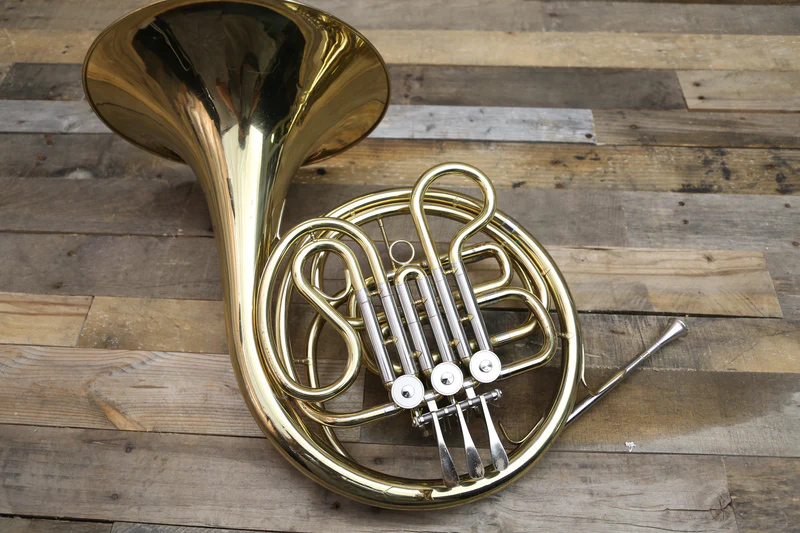A Beginner’s Guide to Selecting Your First Brass Instrument
Choosing your first brass instrument can be exciting, but it also takes careful thought. Brass instruments come in different sizes and styles, each with a unique tone and role.
Some are better suited for beginners due to their ease of use and maintenance. Your choice depends on what kind of music you want to play and how comfortable you are with the instrument’s weight and air demand.
Getting the right guidance early on will save time and money in the long run. Read on to explore the key points to consider when selecting your first brass instrument.
Understand the Different Types of Brass Instruments
Brass instruments fall into several categories based on pitch and use. Trumpets are common for beginners because they are small and easy to manage. Trombones add a sliding feature that changes the way notes are played.
French horns have a rounded tone but need more control. Tubas have a deep, rich sound and are larger in size, often suited for players with strong lung power. Cornets are similar to trumpets but produce a mellower tone.
Baritones and euphoniums provide mid-range support in bands. Each type brings its own sound and learning curve. Knowing the differences helps narrow down your choice before you make a purchase.
Consider the Instrument’s Size and Weight
Some brass instruments are bulky and may not be ideal for younger or smaller players. Trumpets and cornets are lightweight and easier to handle. Trombones are longer, requiring more arm reach.
French horns and euphoniums tend to be heavier and need more strength to hold for long periods. If the instrument feels too heavy, practice sessions will be shorter and less effective. The size can also affect how the instrument is stored or transported.
Beginners often benefit from choosing something easier to carry. Portability matters if the player will be moving between school, home, and performances. Comfort is key to sticking with practice over time.
Evaluate Air Requirements
Brass instruments need a steady air supply to produce sound. Some, like trumpets, require short bursts of controlled air. Others, like Tubas, demand a deeper breath and more air volume. Beginners should match their lung capacity with the instrument’s needs.
Playing an instrument that requires too much air can be tiring. Younger players or those new to wind instruments may struggle with larger horns. This can affect tone and make progress slower.
Practicing breathing exercises can help build stamina. Still, it’s better to start with an instrument that matches your current abilities. Proper air control is vital for playing clean notes.
Check for Ease of Maintenance
Brass instruments need regular cleaning and oiling to stay in good shape. Some have complex valve systems that require more time to maintain. Simpler instruments are better for beginners to avoid frustration.
Trumpets and cornets are easier to clean and service. French horns and euphoniums can be trickier due to their tubing. Make sure the instrument comes apart easily for basic cleaning tasks.
Maintenance should not be a barrier to learning. Beginners should learn early on how to take care of their gear. Choosing an easy-to-maintain instrument supports long-term use and performance.
Think About the Learning Curve
Not all brass instruments are equal in terms of how fast a beginner can learn them. Some have a more straightforward layout and finger positions. Trumpets, for example, use only three valves, making it easier to start.
Trombones need precise slide positions, which can take longer to master. French horns are known for being more complex with their valve systems. Learning curves vary depending on the player’s musical background.
Picking an instrument that matches your skill level helps build confidence. Faster progress keeps motivation high in the early stages. A gradual learning path reduces frustration and keeps the process enjoyable.
Know Where You’ll Be Playing
The type of music group you plan to join matters when choosing your instrument. School bands often have more trumpet and trombone players. Jazz bands may favor instruments like the trombone and trumpet.
Orchestras tend to include French horns, tubas, and other deeper-sounding instruments. Marching bands require instruments that are easy to carry and play while moving. If you’re not sure yet, choose something versatile like the cornet or trumpet.
Some instruments are more in demand than others, so your choice could impact your role in a group. Knowing the common setup of the group helps you fit in better. Being prepared saves time when joining a new ensemble.
Consider Future Musical Goals
Think about what you want to do with your instrument long term. Do you see yourself in a symphony or playing jazz solos? Some instruments are better suited for certain genres.
For example, French horns are rarely used in jazz. Trombones work well in both classical and jazz settings. Your choice should match your musical direction. Beginners may not have clear goals yet, but it’s good to start thinking ahead.
It’s easier to switch styles with a more adaptable instrument. If you plan to move up in skill level fast, choose something that grows with you. Your musical path should guide your selection.
Try Before You Commit
It’s always better to try a brass instrument before buying. Even if two instruments look similar, they can feel very different. Trying them out helps identify what feels natural.
Music stores or school band programs may allow trial sessions. You’ll quickly notice which instruments are easier to control. Comfort plays a big role in early progress.
Also, testing helps detect if you can manage the air and finger demands. Ask a teacher or an experienced player to guide your trial. A hands-on experience provides more clarity than online research alone.
Learn to Select Your First Brass Instrument
Picking your first brass instrument takes thought, time, and some trial and error. Each type of brass instrument has its strengths and challenges. Beginners should focus on comfort, ease of use, and long-term potential.
Try to match your skills and goals with what the instrument offers. Learn how to care for it from day one. Stick to a budget, but don’t go too cheap.
Ask for help if needed and don’t rush your choice. The right start makes learning more enjoyable. With the right instrument, progress will follow.
Visit our blog for more topics like this!

![15 Proven Social Media Content Strategies [Every Creator Must Master in 2025]](https://www.verifiedzine.com/wp-content/uploads/2025/01/AD_4nXdyVUCO5SVIzgUnbixKEIbCzOIm-768x432.webp)



